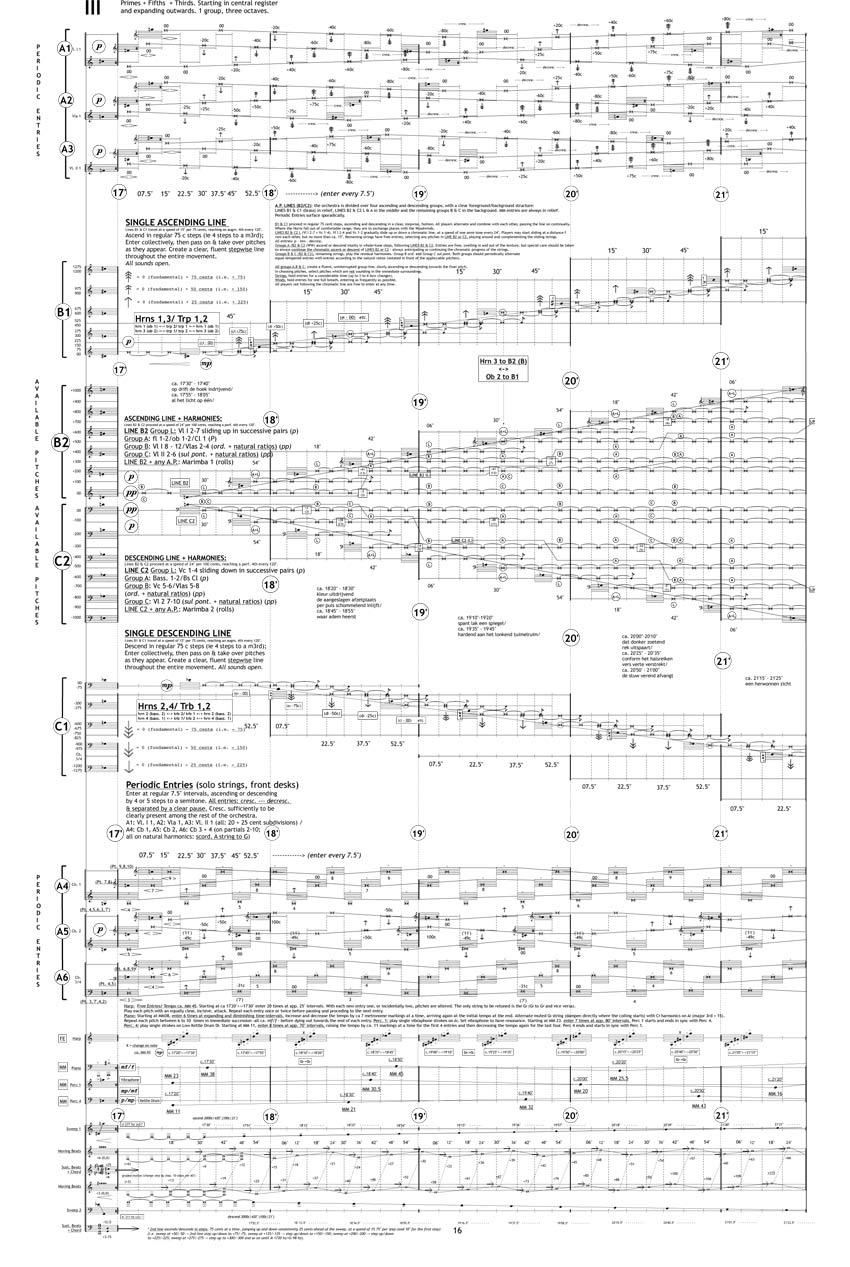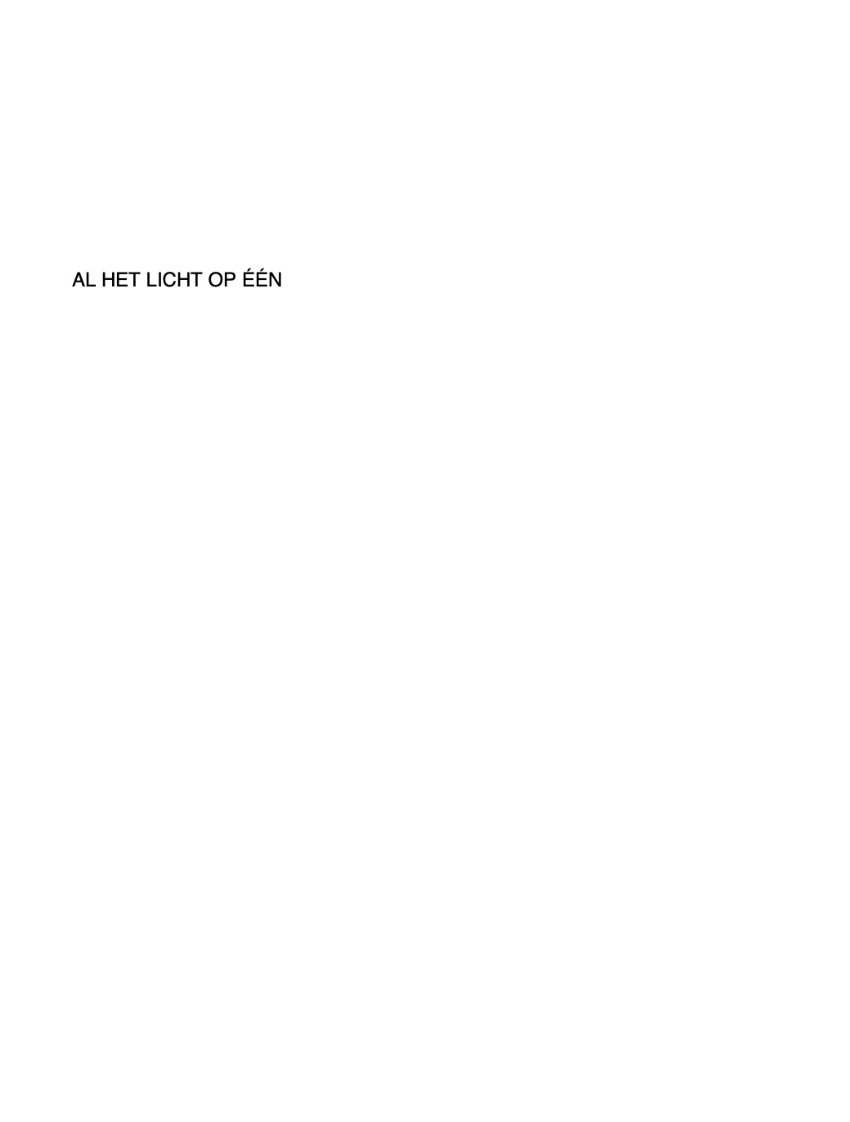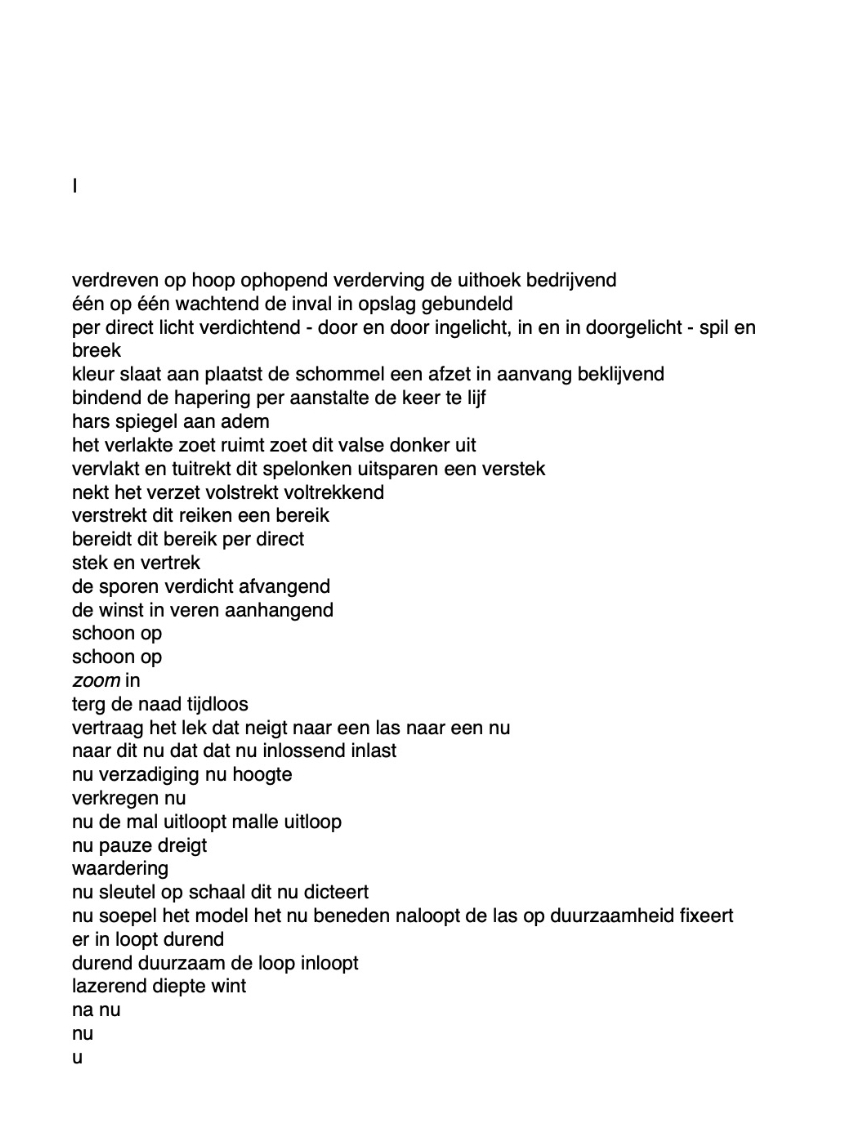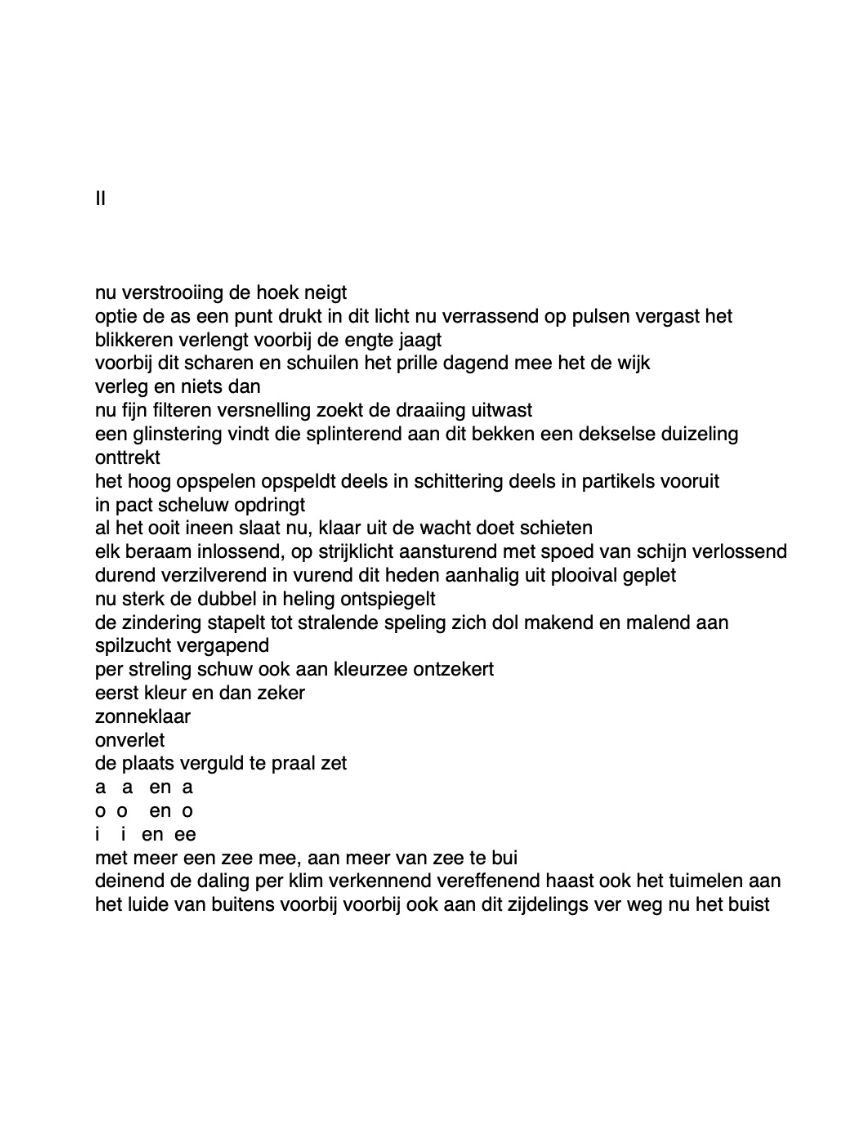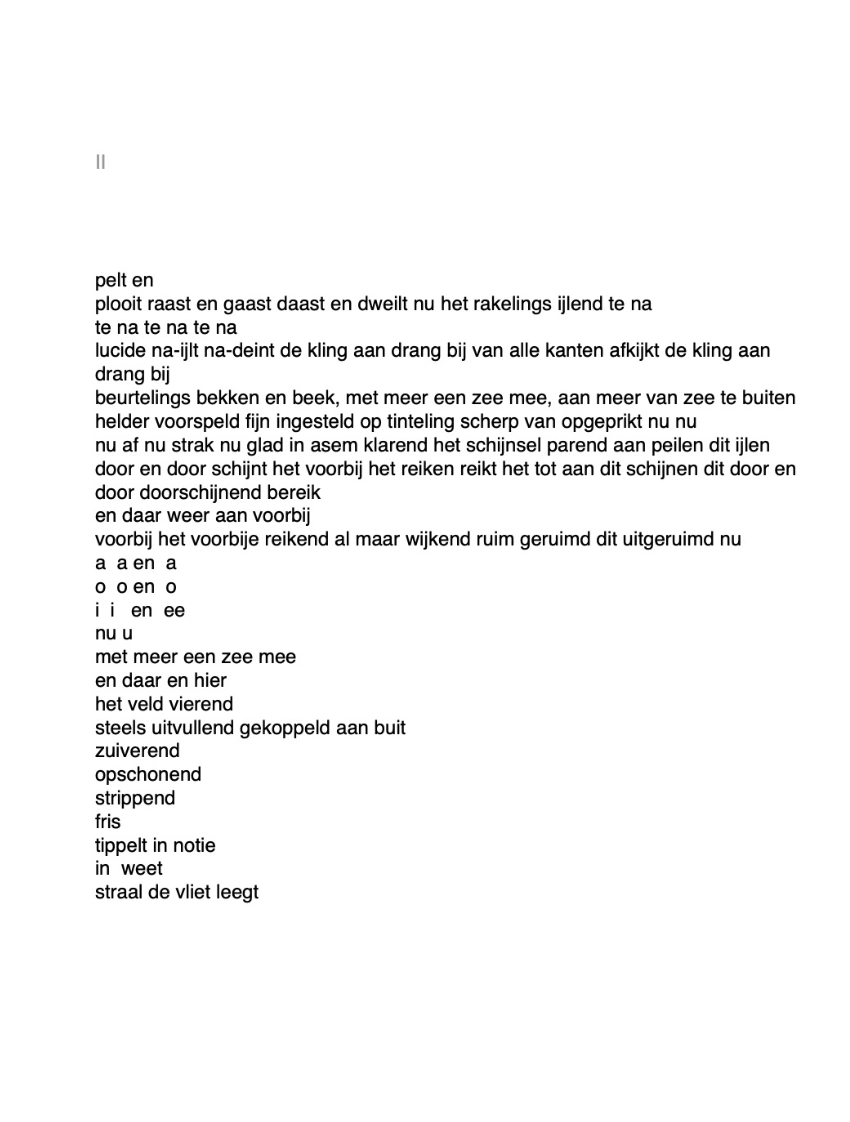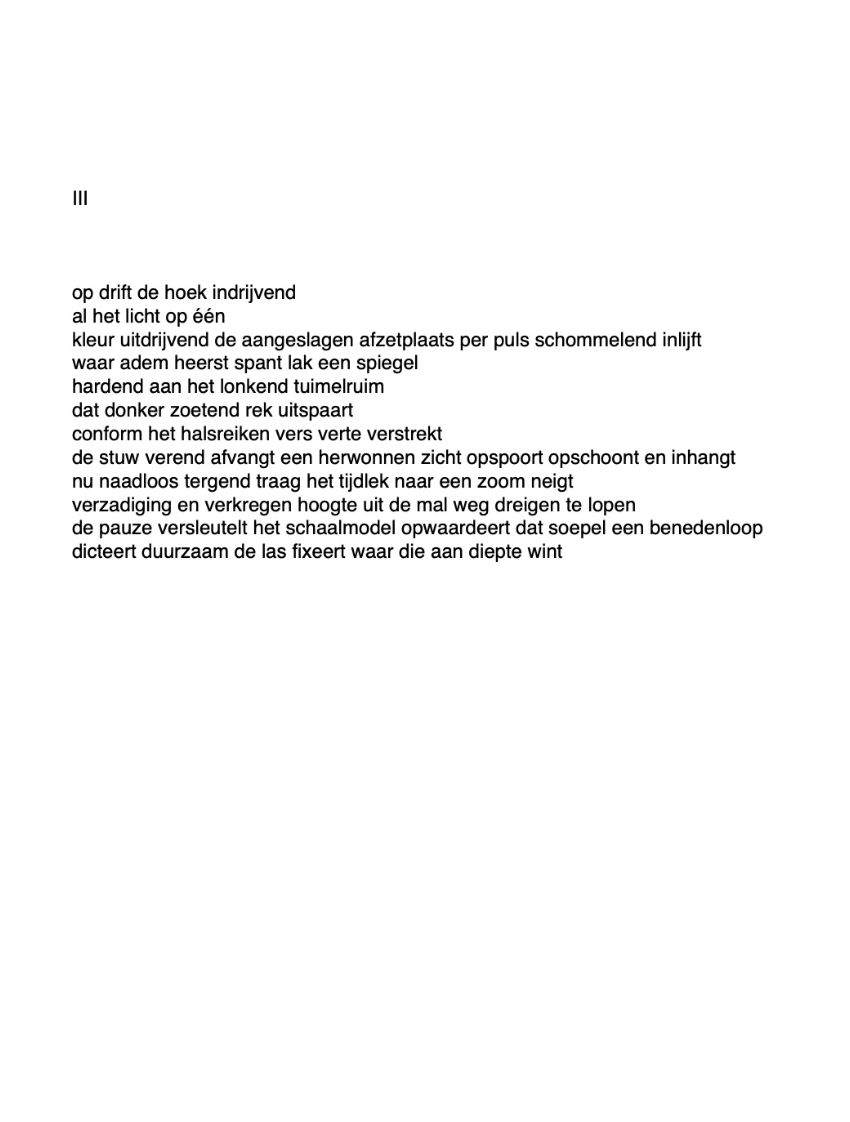No 44 Verdichtingen (2009)
For orchestra, opt. narrator & sinewaves
Commissioned by: Nederlandse Muziekdagen 2009, with financial support from the Netherlands Fund for the Performing Arts
First Performance: Radio Chamber Philharmonic Orchestra & poet Astrid Lampe. Micha Hamel, conductor. October 10 2009, Muziekgebouw aan ‘t IJ, Amsterdam
Instrumentation: large orchestra, piano, harp, 4 percussion& Sinewaves
Duration: ca. 27’
Special Features: Performance requires sound engineer and extra monitors for the musicians. Percussion requires amplification.
![]() Score samples
Score samples
Astrid Lampe Al het Licht op Één
Info/Program note:
Intended as a collaboration between composer, poet and orchestra, Verdichtingen was written in the summer of 2009 at the request of conductor Micha Hamel. The title of the work, untranslatable in English, is both content-related (‘the act of transforming something into poetry’) as well as illustrative (matter ‘merging’, or coalescing).
When starting off the collaboration with poet Astrid Lampe, and not wanting to resort to a simple ‘setting’ of a prior text, we quickly decided to strive for a one-on-one relationship between text and music so that whatever occurred in the music would at all times be suggested by the content of the text and vice-versa. Text and music were thus conceived independently and were discussed exclusively on the basis of subject matter, textual density and poetic form. Eventually several topics emerged pertaining to density, direction, luminosity and so on. Once completed, the text was chopped up in time segments which were then divided over the score and performed by the Poet in a similar way as the musicians would be performing their parts. In this way, ‘the poet’ naturally became ‘a musician’.
As in much of my work, the music investigates specific relationships between ‘microtonal reflection’, time and perceived velocity. An important part in Verdichtingen is reserved for the percussion, which translates specific microtonal relationships to tempo.
In three sections, each lasting ca. 9’, the work explores the gradual emergence of harmony, through the successive addition of octaves, fifths and finally thirds.


